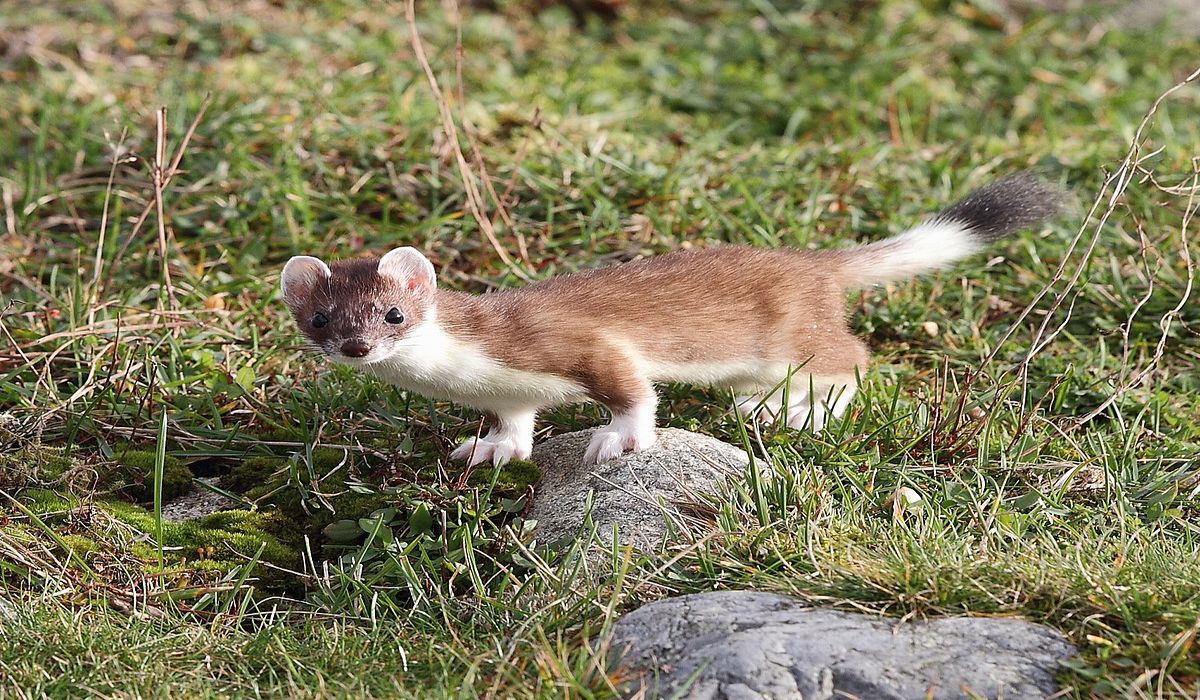
What is a stoat? A stoat, also known as a short-tailed weasel or ermine, is a small mammal found across Europe, Asia, and North America. These agile creatures belong to the Mustelidae family, which includes otters, badgers, and ferrets. Stoats are known for their slender bodies, bushy tails, and sharp hunting skills. In winter, their fur often turns white, providing excellent camouflage in snowy environments. Despite their cute appearance, stoats are fierce predators, capable of taking down prey much larger than themselves. They play a crucial role in controlling rodent populations, making them vital to their ecosystems. Want to learn more? Here are 30 fascinating facts about stoats that will surprise you!
What is a Stoat?
Stoats, also known as short-tailed weasels or ermines, are small mammals found in various parts of the world. These fascinating creatures have a lot of interesting traits and behaviors. Let's dive into some intriguing facts about stoats.
-
Stoats belong to the Mustelidae family, which includes weasels, otters, and badgers.
-
They have a long, slender body that helps them navigate through narrow spaces while hunting.
-
Stoats are known for their distinctive black-tipped tail, which remains black throughout the year.
-
In winter, stoats in colder regions change their fur color to white, becoming "ermine." This helps them blend into snowy environments.
-
Despite their small size, stoats are fierce predators, capable of taking down prey much larger than themselves.
Stoat Habitat and Distribution
Stoats are adaptable creatures that can thrive in various environments. Here are some facts about their habitat and distribution.
-
Stoats are native to Eurasia and North America but have been introduced to other regions, such as New Zealand.
-
They prefer habitats with dense vegetation, such as forests, grasslands, and wetlands.
-
Stoats are also found in agricultural areas, where they hunt rodents and other small animals.
-
They are excellent swimmers and can cross rivers and lakes to find food or escape predators.
-
Stoats create dens in burrows, hollow logs, or rock crevices, often taking over abandoned nests of other animals.
Stoat Diet and Hunting Behavior
Stoats are carnivorous and have a diverse diet. Their hunting skills are impressive and worth noting.
-
Stoats primarily feed on small mammals like rabbits, mice, and voles.
-
They also eat birds, eggs, insects, and occasionally fish.
-
Stoats are known for their "dance of death," a frenzied display of leaps and twists that mesmerizes their prey.
-
They have a high metabolism and need to eat frequently to maintain their energy levels.
-
Stoats store excess food in their dens, a behavior known as "caching," to ensure they have a food supply during scarce times.
Stoat Reproduction and Lifespan
Understanding stoat reproduction and lifespan provides insight into their survival strategies.
-
Stoats have a unique reproductive strategy called delayed implantation, where the fertilized egg remains dormant for several months before developing.
-
This allows stoats to time the birth of their young with favorable environmental conditions.
-
Female stoats give birth to litters of 6-12 kits, usually in late spring or early summer.
-
Kits are born blind and helpless but grow rapidly, becoming independent at around 12 weeks old.
-
In the wild, stoats typically live for 4-6 years, although some can live up to 10 years in captivity.
Stoat Behavior and Social Structure
Stoats exhibit interesting behaviors and social structures that help them survive in the wild.
-
Stoats are solitary animals, only coming together during the breeding season.
-
They are highly territorial and use scent marking to establish and defend their territory.
-
Stoats communicate through vocalizations, body language, and scent marking.
-
They are known for their agility and can climb trees, swim, and run at high speeds.
-
Stoats are crepuscular, meaning they are most active during dawn and dusk.
Stoats and Humans
Stoats have had various interactions with humans, both positive and negative.
-
In some cultures, stoats are considered symbols of purity and were historically hunted for their white winter fur.
-
Their fur, known as ermine, was highly prized and used to make luxurious garments for royalty and nobility.
-
In New Zealand, stoats were introduced to control rabbit populations but became a significant threat to native bird species.
-
Conservation efforts are ongoing to manage stoat populations and protect vulnerable wildlife.
-
Despite their reputation as pests in some areas, stoats play a crucial role in controlling rodent populations, benefiting agricultural and natural ecosystems.
Stoats: Nature's Fascinating Predators
Stoats are more than just cute, furry creatures. These small predators play a crucial role in their ecosystems. With their incredible agility, stoats can take down prey much larger than themselves. Their fur changes color with the seasons, providing excellent camouflage. Stoats are also known for their playful behavior, often seen chasing each other in what looks like a game of tag.
Despite their playful nature, stoats are fierce hunters. They have a high metabolism, requiring them to eat frequently. This makes them effective at controlling rodent populations. However, in places like New Zealand, stoats have become an invasive species, threatening native wildlife.
Understanding stoats helps us appreciate the delicate balance of nature. These fascinating animals remind us of the complexity and interconnectedness of ecosystems. Next time you see a stoat, remember there's more to these little creatures than meets the eye.
Was this page helpful?
Our commitment to delivering trustworthy and engaging content is at the heart of what we do. Each fact on our site is contributed by real users like you, bringing a wealth of diverse insights and information. To ensure the highest standards of accuracy and reliability, our dedicated editors meticulously review each submission. This process guarantees that the facts we share are not only fascinating but also credible. Trust in our commitment to quality and authenticity as you explore and learn with us.
